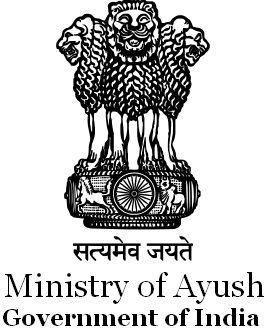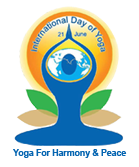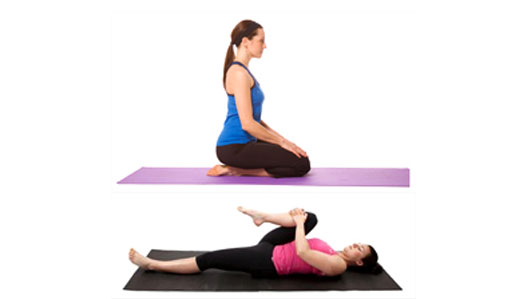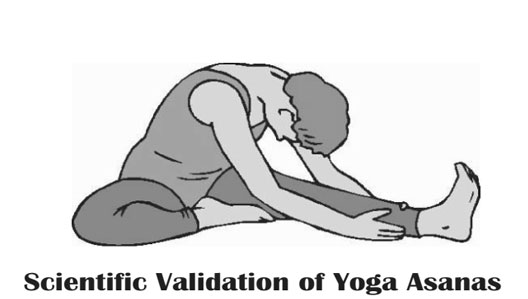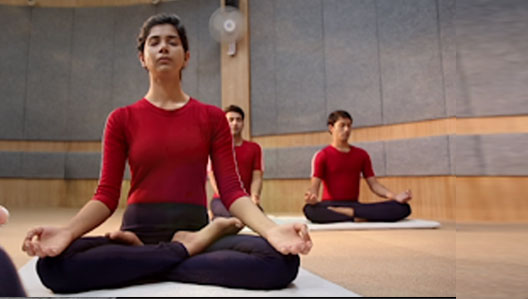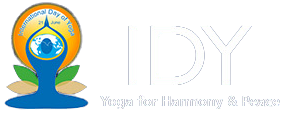The Role of Yoga in Cardiac Health
2021-05-24
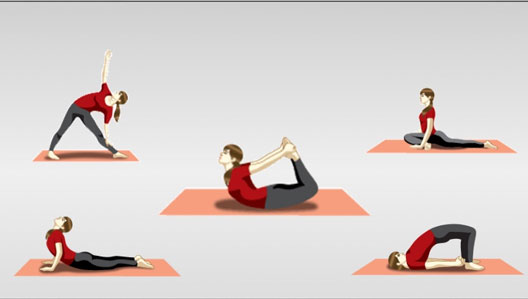
Introduction
Yoga Therapy
Yoga and relaxation have been successfully used to check high blood pressure and coronary artery disease. Yogic therapy not only reduces high blood pressure, but also reduces serum cholesterol, triglycerides, free fatty acids, blood glucose, and body weight. Yogic practise also improves physical fitness and helps to improve one’s efficiency.
Asana
1. Tadasana:
Procedure:
a. Stand straight with your feet together and hands on the sides of the body.
b. Slowly clasp your hands and raise your hands above the head and try to stretch as much as
possible with the heels raised.
c. Try to hold the position for 10 to 20 sec.
d. Exhale and slowly come back to the basic position.
e. Repeat the posture for 3 to 5 rounds.
2. Ardha Matsyendrasana:
Procedure:
a. Sit straight with the legs stretched.
b. Slowly fold the right leg inside and place it near the left hip, the fold then left leg and place it on the other side of the right leg.
c. Now with the right hand taking it around the knees, try to hold the left knee or the toes. Take the left hand behind the waist and twist back.
d. Hold the position for 10-20 sec.
e. And repeat the sequence with the left leg folded.
f. Now slowly exhale, come back to the starting position.
g. Repeat 3-5 times.
3. Bhujangasan
Procedure:
a. Lie down on your abdomen with both hands and legs together.
b. Slowly place the hands under the shoulders and chin on the ground.
c. By slowly inhaling try to raise head, neck and upper body elbows inside and bent, without applying much pressure on the arms try to raise up.
d. Hold for 10-20 sec and slowly exhale, come back to the starting position.
e. Repeat the posture 3-5 times.
4. Dhanurasan
Procedure:
a. Lie down on your abdomen with both the hands and legs together.
b. Slowly fold your legs at the knee joint and get it closer to the hips.
c. Try to hold the ankles on both the sides.
d. Now slowly inhale and try to pull the legs back by making the hands straight and try to raise the upper body.
e. Hold the position for 10-20 sec
f. Exhale slowly, come back to starting position.
5. Uttan padasana
Procedure:
a. Lie down on your back with hand and legs together.
b. Slowly inhale and try to raise the legs to 30 degree angle and try to hold the position for 5-10 counts. Exhale and come back to the base position.
c. Now slowly inhale and raise the legs to 60 degree angle and hold the position for 5-10 sec. Exhale and come back to the base position.
d. Now inhale and raise both legs to 90 degree angle and hold it for 5-10 secs. Exhale and come back to the base position.
6. ArdhaShalabasan
Procedure:
a. Lie down on your abdomen with hands and legs beside your body and chin on the ground.
b. Place both the palms under the thighs or beside the thighs. Inhale and raise the right leg up, above the knees in a comfortable pose and try to hold the position for 10-20 seconds. Exhale and slowly come back to the base position.
c. Repeat the same with the left leg.
d. Repeat it alternately with the right and left leg for 3-6 times.
7. Merudhandasan
Procedure:
a. Lie on your back with hands and legs together.
b. Slowly take your hands to the shoulder level sideways or at right angles to the body.
c. Now slowly inhale and bend the right leg at the knee joint and place the right feet on the left knee.
d. Exhale and turn the lower body from waist to left side and upper body and head towards right side.Hold the position for 10-20 sec.
e. Inhale and come back to the centre and to the base position.
f. Repeat the same with the left leg.
8. Sethubandhasan
Procedure:
a. Lie down on your back with hands and legs together.
b. Slowly fold your legs and try to get it closer to your hips.
c. Now slowly while inhaling try raise your hip up as much as you can .
d. If possible try to hold the ankles and hold the position for 12-20 seconds, and slowly while exhaling come back.
e. Stretch the legs forward and come back to the base position.
f. Repeat the posture for 3 – 5 times.
9. Gomukhasana
Procedure:
a. Stretch out your legs in front.
b. Bend the left leg at the knee and pull it closer to the body. Raise your right knee and tuck the left foot under the right thigh, such that it just touches the buttock.
c. The toe and side of the foot should be touching the ground, with toes pointing away from the body.
d. Draw in your right foot and cross it over the left thigh.
e. Place the right foot close to the left buttock. The right heel should be touching the left buttock.
f. Place the right and left knees above one another.
g. Try to keep the head and back straight.
h. Turn the left elbow and bring the left forearm behind the back such that the elbow is pointing down.
i. Push the forearm further up the spine as far as one can.
j. Raise the right arm straight up so that it touches the right ear.
k. Bending the elbow bring the forearm down over the right shoulder.
l. Try to reach the left hand.
m. Lock the forefingers of both the hands.
n. Try keeping the neck, head and spine erect.
o. Look in front and hold the pose for a few seconds.
p. Return to the starting position.
q. Perform the pose again with the arms and legs in a reversed position.
10. Shavasan
Procedure:
a. Lie straight on your back with ease.
b. Make distance of about one and half feet between legs.
c. Place hands straight on the ground at the distance of six inches from your body.
d. Let the palms face upward, fingers should remainslightly curled, and eyes closed.
e. After maintaining it for some time, return to the normal position.
Pranayama
1. Deep breathing
2. Anulom vilom
3. Brahamari
4. Sheetali
5. Sheetkari
6. Cat stretch breathing
7. Hand stretch breathing
Relaxation techniques
1. DRT
2. OM meditation
3. Yoga nidra
Diet
1. High fibre diet (eat lots of fresh fruits and vegetables, whole grains, and beans)
2. Fresh flaxseed oil.
3. Increase levels of onion and garlic in the diet.
4. Eat vegetables like cabbage, cauliflower, Brussels sprouts, and broccoli.
5. Eat good amount of green leafy vegetables.
6. Increase the levels of soy in the diet.
7. Increase the amount of dark berries like raspberries, strawberries, blackberries and blue berries.
8. Consume oat bran daily as a rich source of fibre.
9. Green tea and herbal tea can be consumed.
10. Drink at least 2 litres of water every day.

